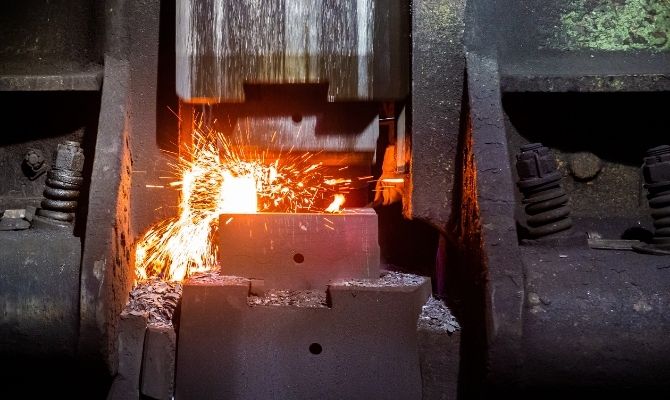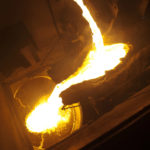Forging is the delicate process of shaping metals into a desired form and size. Professional metalsmiths employ a variety of different forging techniques depending on the material they must work with and the product they intend to produce.
These are the main types of forging processes: open-die, impression die, cold, and seamless rolled ring. Let’s look at four of the different kinds of forging processes and how people use them.
Open-Die Forging
For open-die forging, metalsmiths place the workpiece between two flat or simple dies. These dies are open on the sides and allow for free lateral movement. To shape the metal, they compress or hammer the dies in subprocesses known as press forging and hammer forging.
Open-die forging is ideal for creating large and heavy products. It produces less waste than other forging processes and creates products with a more uniform grain structure and better resistance against fatigue.
Impression Die Forging
Impression die forging, also known as closed-die forging, is similar to open-die forging. The main difference between the two is that, in impression die forging, the dies that surround the workpiece enclose it completely.
Because the impression die process doesn’t allow for free lateral movement, people use it to create parts that are small and light. This type of forging creates products with high tolerances and smooth surface finishes.
Cold Forging
Another one of the different kinds of forging processes is cold forging. Most forging processes involve the application of heat to the base metal, but not all of them. Some forging processes, like bending, coining, cold drawing, cold heading, and extrusion, use cold temperatures to shape the workpiece instead.
Cold forging shares many of the same benefits of impression die forging. It creates products with high tolerances and exemplary surface finishes.
Seamless Rolled Ring Forging
Like other forging processes, this one shapes the metal by compressing it between dies. But the dies aren’t flat—they’re curved!
Usually, the dies take the form of two steel rollers inside a machine called a rolling mill. They create ring-shaped products with high durability and quality finishes.






